Tattoo Removal
About Laser Tattoo Removal Services
Regretting your tattoo? Laser treatment is the safest way of removing a tattoo with minimal to no scarring.
About 50% of people later regret their tattoos. Although some feel that tattoos are becoming more acceptable in our society, stereotypes and perceptions of those with tattoos persist.
Laser tattoo removal is the safest and most common way of removing a tattoo. In contrast to other tattoo removal methods, laser treatment carries little to no risk of causing a scar. Different lasers are used to remove a tattoo depending on the ink color. The laser light is absorbed by the tattoo pigment and causes the tattoo particles to shatter into smaller fragments that are then carried away by the immune system.
How many treatments are necessary?
Multiple laser treatments are required to reduce the intensity of the tattoo. The tattoo becomes lighter with each treatment. Generally, 6 - 12 monthly treatments are necessary although there is a large variation. Many patients opt to stop treatment when the tattoo is a faint black and difficult to distinguish from surrounding skin (see photos).
What does the treatment involve?
Treatment varies from patient to patient depending on the age, size and type of tattoo, color of the patient's skin and depth to which the tattoo pigment extends beneath the skin's surface. All tattoos will require retreatment at 4-8 week intervals.
How painful is it?
Laser treatments are less painful and require less recovery time than some other treatment methods. The degree of discomfort varies with each person, depending on his/her pain threshold. Most patients do not require anesthesia. In some cases, however, depending on the nature and location of the tattoo, the physician may elect to use topical local anesthesia.
Tattoos that have not been effectively removed by other treatments may respond well to laser therapy, providing prior treatment did not cause excessive scarring or skin damage.
Patients will experience some temporary discoloration or reddening of the skin around the treatment site. Some patients may experience a temporary lightening of the skin for a few months following treatment. The skin will typically resolve to normal pigmentation color but in some instances may remain lighter in color. It is important to follow the recommendations of the treating physician for proper post-treatment skin care.
What types of tattoos can be treated with laser?
The most easily treated tattoos are blue-black tattoos, both amateur and professional. The effectiveness of the laser is dependent upon the location and depth of the tattoo, as well as the composition of the pigments. Tattoos with bright to tan colors are more difficult to remove. Tattoos with iron or titanium (flesh colored, pink, white, and some shades of blue) may paradoxically darken with treatment and cannot be cleared. Your physician may decide that a test laser spot should be performed to ensure that your tattoo does not darken with treatment. Taking care of the treated area is the most important factor in removing a tattoo without a scar.
|
Before Laser Treatment
|
After Laser Treatment
|
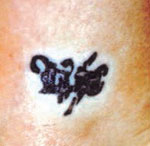 |
 |
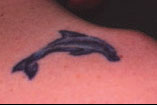 |
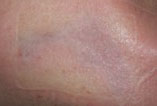 |
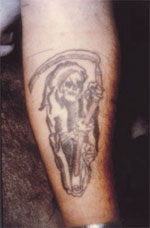 |
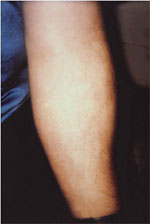 |
|
Photos courtesy of Candela Laser Corporation.
|
|
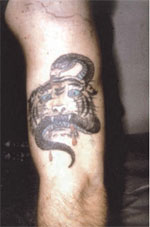 |
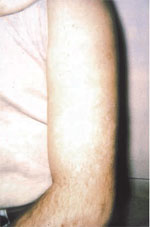 |
|
Photos courtesy of Candela Laser Corporation.
|
|
|
Individual results may vary.
|
|
